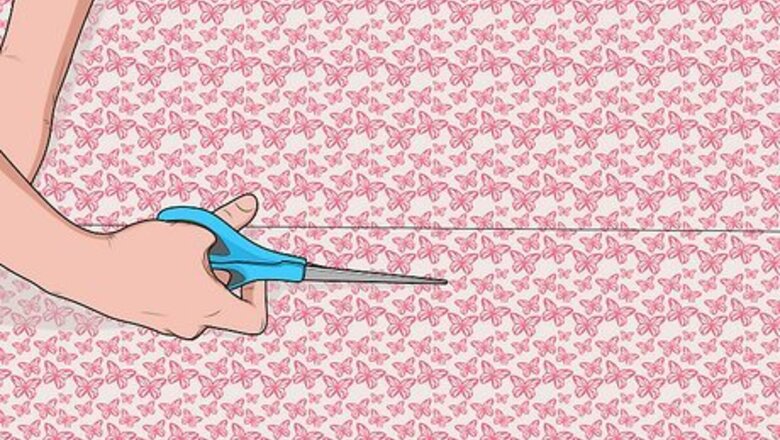
views
These blinds are not challenging to create, making them just takes a little time and effort. And, in the end, you'll have a wonderful customized roman blinds that suits completely and exactly what you're looking for...an affordable price.
Give your fabric a good ironing. A crisp press makes a sewing project so much easier! Always press both the fabric and lining.
Measure the width and height of the inside of your window where the shade will be hanging.
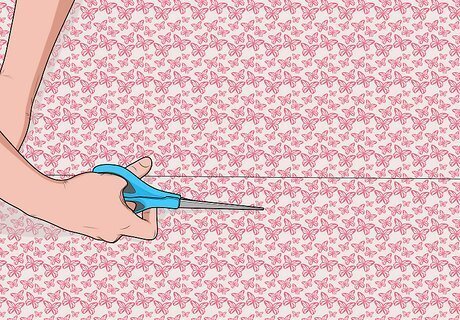
Cut out your fabric adding 1/2" to each side and 4" to the length.
Take your lining and mark out your measurements for the tube tape (show below) with pins. The first row of tape should be 5 inches (12.7 cm) from the bottom. The next row should be 8 inches (20.3 cm) up and repeat with three more rows 8 inches (20.3 cm) apart.

Keep in mind that tube tape is a fantastic product that has little loops along the top of the tape for running nylon cord through (as shown above) and a pocket along the bottom (shown below) where you can insert a dowel. If you are still unsure of what you are looking for, ask for tube tape used for roman blinds at your fabric store and they should hopefully know what you're looking for.
Pin down the tube tape. Pin the tape to the right side of the lining and start at the bottom.
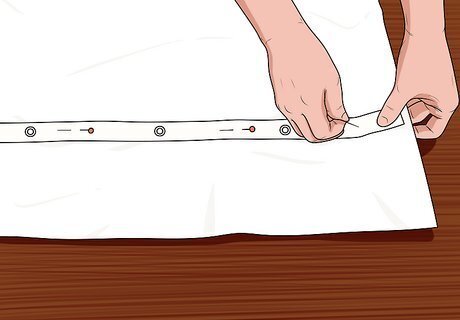
Pin your tape down with the bottom of the tape right above the marking pin (as shown on the right). Keep measuring as you pin your tape across the width of the lining, making sure you are keeping the tape straight.
Lay your next row of tape down, once again above the pin marking (refer to above photo). As you work your way across, pinning the tape down, measure 8" from the top of the tape to the top of the tape below and you will be able to make sure you are continuing to pin in a straight line.
Continue laying out and pinning your rows of tape until you have five rows completed. You should have about 13" of fabric left after your fifth row of tape. You don't want to go too close to the top of your fabric or things will look very wonky when you're at the finishing stages!
Baste your tape onto the lining. You can use bright colored thread in this tutorial for demonstration purposes, but you certainly don't have to. Just make sure when you are basting, that you stitch right along the top of the tape and avoid stitching over the little loops.
Stitch the lining to the fabric! Pin the right sides together, and stitch the sides and bottom together with a 1/2" seam, leaving the top open.
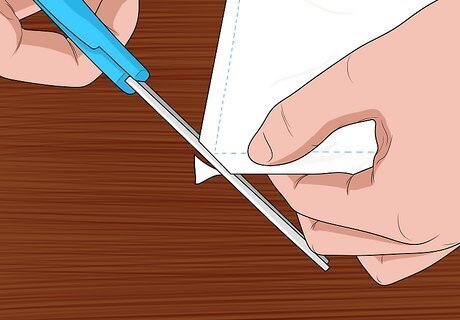
Trim the bottom corners and flip them right side out, making sure the corners are neatly pushed out. You're going to feel like a professional seamstress when you see your shade coming together! Press the edges of the shade out flat.
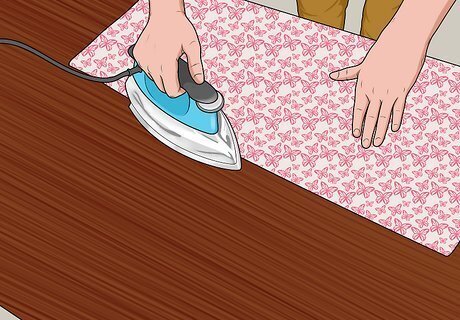
Press the edges of the shade out flat.
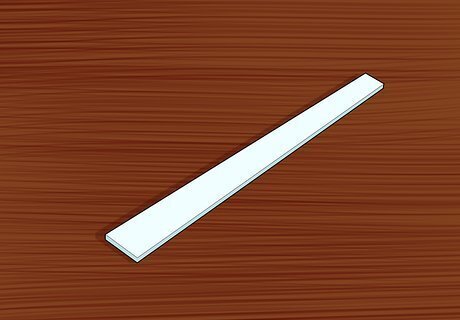
Find a slat of some sort to push into the bottom of your shade. The main thing you need to look for when choosing a slat, is that it is sturdy, yet slim. For this particular fabric blinds, Hubs had some plastic slats from an old mini blind hanging around, and it worked perfectly! It was flexible and yet wouldn't break - which is something you need to watch for if you use a wooden slat. If it is too thin, it can snap. A 1/4" thickness would be perfect. The width of the slat should not be greater than 1.25".
Slide the slat between the fabric and lining down to the bottom of the blind. Stitch a pocket to keep the slat in place, which you can do either by hand or by machine. For this blind, try using a zipper foot and stitch with the machine. This is by far the most challenging step (if done by machine) as you need to make sure you are far enough away from the wall to accommodate the slat sticking out behind you and in front of you, as you stitch.Stitching by hand will alleviate this problem, but it does take longer.
Stitch the tape again! This time, you'll be stitching through all the fabric so make sure your top thread and bobbin thread match the fabrics! (Bobbin thread should match the shade fabric and top thread should match the lining.) Once again, pin the tape and fabric together, making sure everything is smooth and flat.
Carefully stitch in the "ditch", as you can see in the above picture.This will eliminate any chance of accidentally stitching the loops shut. Try pinning and stitching one row at a time, removing the basting before continuing on to the next row.This way you can be sure to pull the fabric smooth between each row and ensure a better finished product.
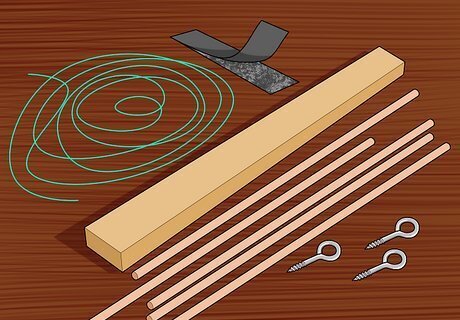
Get your 1" x 2" board - measured and cut to fit inside the width of the window (ours was 45.75"), dowels, circle screws, velcro, nylon cord and cord drop.
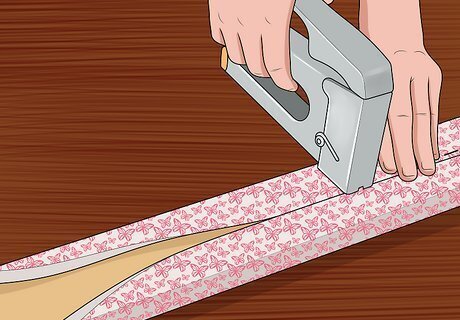
Using leftover fabric, "upholster" the 1" x 2" board. To be honest, this part is optional. The shade will work just fine without covering the board...it just won't look as nice! At any rate, if you choose to cover it...wrap it much the same as you would wrap a gift...just use staples instead of tape! Tuck those ends in and staple them neatly too!
Staple the "hook" side of the velcro to one edge of the board.In this example, we stapled the velcro right over the staples fastening the fabric underneath, so everything is neat and tidy.

Stitch the "loop" part of the velcro to the lining side of the shade.
Stitch down both sides of the velcro. Trim the excess fabric down about 1/2" away from the velcro, as shown. Attach the velcro on the shade to the velcro on the board.
Measure out and predrill holes for the little circle screws.Start by measuring in 2" on each end. Predrill. You want each of the screws to be roughly 10" apart. Try pre-drilling right in the middle of the board, and then again in the middle of the two "sections". It should look something like what's shown in the picture.
Pull it all together with your nylon cord.Decide which side you want to have your cord drop (the side you want to pull the shade up) and start working on the opposite side of the shade. You will need to tie a bulky knot - and this is important because you don't want that knot eventually pulling through the loops on the tube tape. Try knotting it about three times, and then thread the cord through a large blunt needle. Again, start at the bottom of the opposite side you want your cord drop. Measure 2" in from the edge and pull your needle through a loop on the bottom row of tube tape.
Just to make sure that knot doesn't come untied in the future (the nylon cord can be slippery), try stitching your knot together with a regular needle and thread. Just run some stitches through it all and eliminate a possible headache down the road.

Insert the dowels into the little pockets in the bottom of the tube tape. You may need to trim down the length of the dowels to fit neatly inside the tape, and that can easily be done with a utility knife.
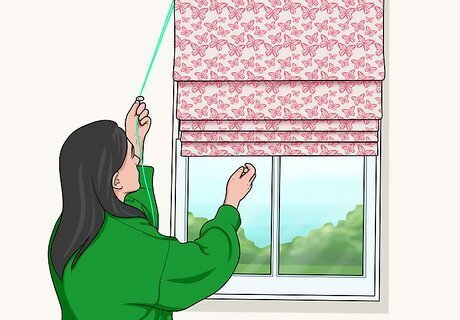
Pull your blind up and adjust the folds. It takes a few days to "train" the fabric to lie down into nice folds, especially if the fabric is thick. Try using a light blocking liner.




















Comments
0 comment